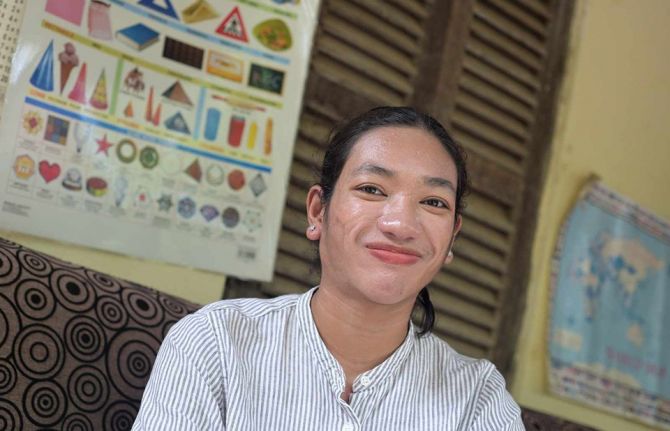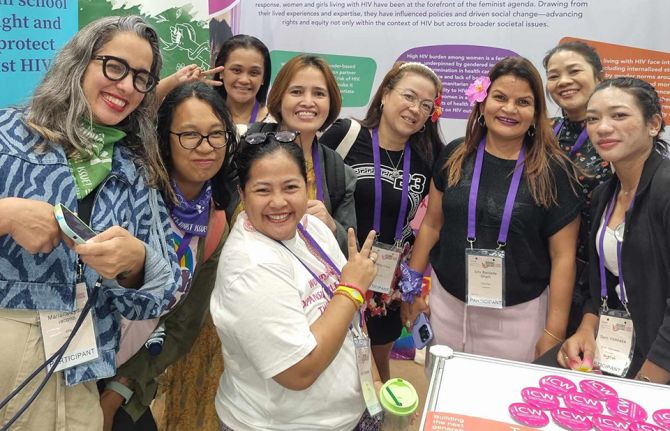
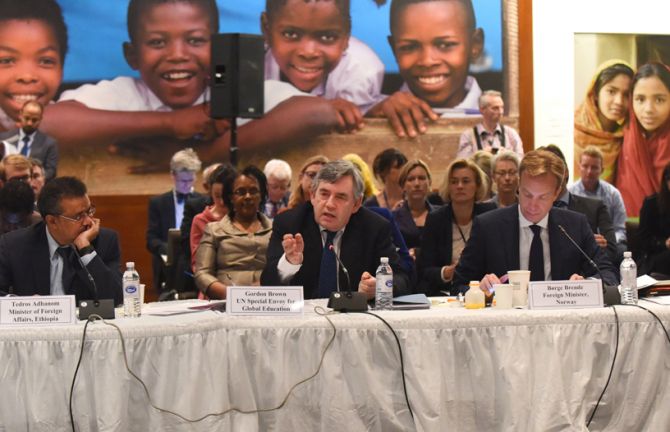
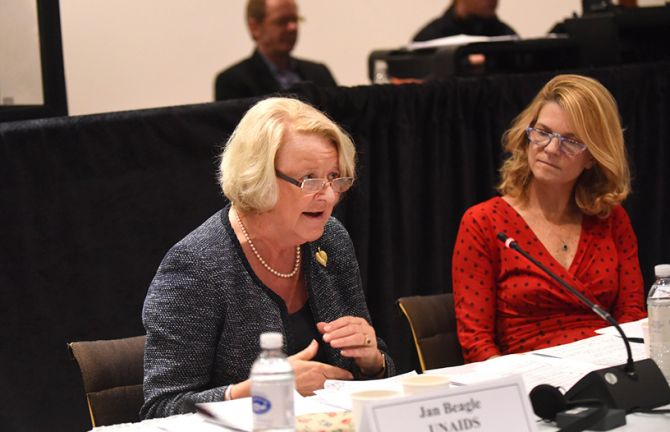
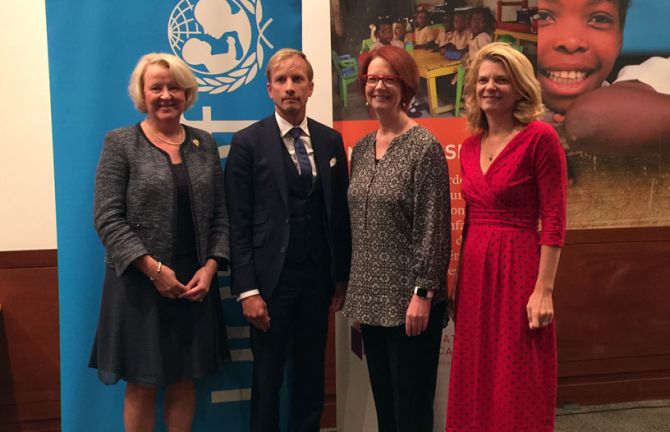
Feature Story
Striving for greater collaboration across health and education in new development agenda
27 September 2015
27 September 2015 27 September 2015Responding to the challenge and opportunity posed by the interconnected Sustainable Development Goals (SDGs), leaders in health and education from across the world came together on the sidelines of the SDG Summit to discuss ways in which the health and education sectors can collaborate and integrate towards joint, people-centered results.
Convened by the Global Partnership for Education, the Global Fund to Fight AIDS, Tuberculosis and malaria, UNICEF and UNAIDS together with the United Nations Foundation and the Global Poverty Project on 26 September 2015, the high-level roundtable stressed the need for adequate financing in health and education to meet the SDGs.
Participants speaking at the event included Julia Gillard, Board Chair of the Global Partnership for Education and former Prime Minister of Australia, Gordon Brown, UN Special Envoy for Global Education, Tedros Adhanom Ghebreyesus, Minister of Foreign Affairs for Ethiopia, Mark Dybul, Executive Director of the Global Fund, and Jan Beagle, UNAIDS Deputy Executive Director. Participants agreed that putting people—particularly women and girls—at the center of the collective health and education efforts will be the key to success in the SDGs.
Adolescent girls, predominantly in sub-Saharan Africa, face higher risks of HIV infection. In 2014, an estimated 60% of all adolescents aged 15-19 years living with HIV were girls. Strong evidence shows that keeping adolescent girls and young women in school reduces the risk of HIV infection. Better educated young women are also more likely to delay sexual debut, to use condoms more frequently, to delay marriage and childbearing and to have better earning potential.
Participants at the event noted that there is significant work to be done to further collaboration between the health and education sectors but that there are good experiences of multisector responses and existing platforms to build on, including those established in the global AIDS response.
Emphasizing how gains in the AIDS response have been proven to maximize impact across other development outcomes, Ms Beagle said: “The AIDS response has shown the value of a multi-sectoral and people-centered approach. From the outset, it was clear HIV was much more than a health issue. It is a development issue, a rights issue, a gender issue that has inclusion of affected communities and evidence and rights-based approaches at its core. Lessons learned from this can be transferred not just to health and education, but across the SDGs.”
Concluding the roundtable, participants committed to continue their engagement, invest in girls’ health and education, focus joint efforts on evidence-based strategies, apply lessons learned through other sectors and monitor success. They stressed the importance of building on the momentum for cross-sectoral collaboration created at the Summit and continuing the dialogue to further advance the integration agenda.

